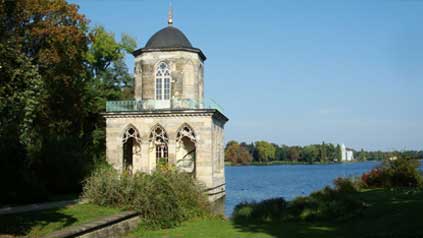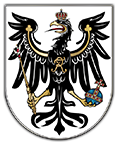
After the death of King Frederick II, Potsdam saw an increase in the construction of new projects. His successor, Frederick William II, arranged to have a new park laid out in the north of the city on the border of the lake Heliger See.
Extending over 102 hectares, Neuer Garten or New Garden was designed as a modern version of the nearby Sanssouci. To build the vast park, Friedrich William II purchased private gardens, vineyards and orchards close to the lake. While the ornamental gardens at Sanssouci were influenced by the Baroque style, the New Garden reflected more contemporary garden design. Inspired by the King’s visits to the small principality of Anhalt-Dessau, the mid-18th century Dessau-Wörlitz Garden Realm was used as a model to create the English-style garden. Wörlitz gardener Johann August Eyserbeck and Johann George Morsch were commissioned to transform the area into a romantic landscape garden.Over the years, the park’s collection of buildings has grown beyond the original summer houses that were incorporated into the new park. The north of the New Garden was once a dairy farm. Milk from cows that grazed in the park was made into cheese and butter. Other buildings on the site are named for their colour, including the Brown House, Red House, White House and Green House.
Construction of a new palace on the banks of the lake began in 1787. The design for the Marble Palace or Marmorpalais followed plans by Carl von Gontard and Carl Gotthard Langhans. Originally built in the shape a cube, the two-storey building was expanded in 1797 to include two additional wings for the royal household. The façade of the palace kitchen was built to resemble a partially buried temple ruin. An underground passage connects the kitchen with the palace.Between 1789 and 1794, the grounds of the New Garden in Potsdam were developed to add additional buildings. Additions included Dutch-style red brick houses to serve as guest and servant accommodation, as well as stables and a coach house. In the far south of the New Garden is the Gothic Library. This small two-storey pavilion contained King Frederich William II’s book collection. Various fountains and statues were also added throughout the park.
The park also includes the Orangery with an Egyptian-style façade. An obelisk designed by Carl Gotthard Langhans was added in 1793. The marble monument includes four relief medallions symbolising each season. An icehouse resembling a pyramid was built in 1791. The cold storage ice house acted as a huge refrigerator. When the Heliger See froze during the winter, ice blocks were removed and stored in the pyramid’s five-metre deep cavern to keep food fresh.One of New Garden’s most famous buildings is Cecilienhof, which was built between 1913 and 1917. Erected more than a hundred years after the park was first developed, the palace was built as a residence for Crown Prince Wilhelm and his wife Cecilie.
- Tuesday - Sunday: 06:00 - 21:00 clock ( approximately ).
Events in Potsdam
ticket sales
Music Festival in PotsdamThe Music Festival in Potsdam will be held again in June. This year's theme "Music and gardens" ubiquitous. So even on the opening day in June. Interesting and unique you can take guided tours and visits to many different places. For those interested there is an Opera Workshop.
TICKETSDetails about the Music Festival in Potsdam can be found here.
The concert on the eve and Night of the Palaces in PotsdamThe Park of Sanssouci and Sanssouci Palace with its terraced vineyards and the New Palace are undisputedly the most important monuments in Potsdam, therefore provides the Night of the Palaces as an excellent temporal orientation, to learn more about the state capital of Brandenburg.
TICKETSDetails about the Night of the Palaces can be found here.



